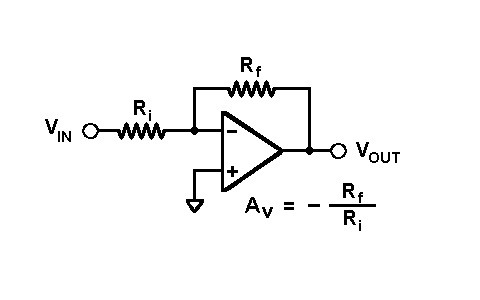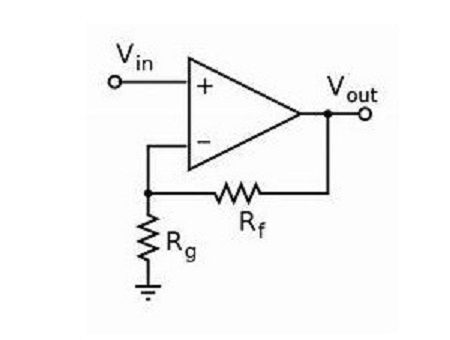This article discusses the Difference between Inverting and non-inverting amplifiers – These are both amplifiers that are derived from the basic operational amplifiers (op-amps). The basic op-amp consists of two input terminals that are known as inverting and non-inverting. These terminals are represented by the sign minus and a plus sign. These op-amps are basically known for their differential characteristics. Hence these are good at performing mathematical operations such as addition, subtraction, comparison, and logical operations. The op-amps are most widely used as logic operators in digital operations. It possesses multiple levels so that maximum efficient output is to be obtained. Based on the condition of its terminals these amplifiers are classified.
Inverting Amplifiers
This is a basic Op-Amp where the terminal with a minus sign is provided with feedback from the output of it. Therefore the feedback is provided for this terminal of the amplifier it is known as inverting amplifier. In this case, the non-inverting terminal is connected to the ground. The gain for this kind of amplifier is high.

Inverting Amplifier
Non-Inverting Amplifiers
The basic op-amp where the output of it and the input are in phase with each other this type of amplifiers are known as non-inverting amplifiers. The gain for this type of amplifier is easy to determine.

Non-Inverting Amplifier
Main Differences
The basic differences between inverting and non-inverting amplifiers are
| Inverting Amplifiers |
Non-Inverting Amplifiers |
|
1. The relation between the input and the output signal generated is with a 180-degree phase shift. |
1. In this amplifier the output generated is the same as that of the applied input. |
|
2. The ratio in between the resistors gives the amplifier gain for these amplifiers. |
2. In this case one plus the ratio of the resistors determines the gain for these amplifiers. |
|
3. In this type of amplifier the slew rate and CMRR are high. |
3. In this type the amplifier functionality is dependent on the terminal. |
| 4. The input terminal is connected to the ground. |
4. The input terminal is connected to the ground in these types of amplifiers.
|
Key Features of Amplifiers and Its Basic Types
- It focuses on the applied input to get inverted because the feedback is provided in between the output to the input inverting terminal.
- The non-inverting terminal is grounded in the case of the inverting amplifiers.
- Inverting terminals are grounded in the case of non-inverting amplifiers.
- In the non-inverting amplifiers, the focusing terminal is non-inverting.
- Phase shifting is present.
- No phase shifting is present in the non-inverting amplifier.
Please refer to this link to know more about Differential Amplifier.
Please refer to this link to know more about LIFI MCQs, Inverting Amplifier MCQs.
Thus, these amplifiers are the basic types that arouse from the involvement of the terminal in the operational amplifiers. In the applications called buffering the non-inverting amplifiers are used because these are capable enough of generating outputs same that of the applied ones. In the case of inverting the output generated has a phase shift of about 180 degrees. Now, will you describe the major application area where the concepts of these amplifiers are present?